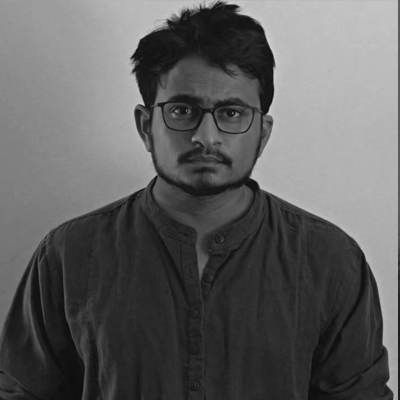A city like NOIDA, that has come into existence through meticulous urban planning, holds the promise of modern living. The city’s extensive arterial roads and highways, flyovers and underpasses to avoid traffic, and a robust public transportation system such as the metro make the idea of moving in NOIDA seem convenient. Yet, as a pedestrian, walking here always makes you feel overwhelmed. When the pedestrian in you is angry at a speeding vehicle, the sight of a cow peacefully walking on the same road evokes a sense of kinship with it. It makes you question the fairness of the narrative that deems city animals as a menace for road traffic. Rather, this narrative feels one-sided and overly biased towards the human world.
As an urban researcher (Tarusha) and a filmmaker (Avikal) duo, studying the urban mobility of animals is of significant interest to us. We seek to explore the role of animals within our contemporary notions of urbanity, and use visual sources to support our findings. Even historically, from the Harappan civilization to Mughal India, animals are widely present in artworks and artifacts. The stillness of animals has always been an obsession for human beings. We see this presence of animals in scriptures, in sculptures, on coins, in paintings, etc. Through these works, the artists reflected the deep interconnectedness between human lives and animals. This human-animal coexistence is becoming increasingly difficult to envision in the context of contemporary post-animal urban practices.
For the longest time, not only have we been dependent on animals for our mobility but we have also been moving together. Though this interdependence has reduced especially for humans with the advent of automobiles, interestingly the animals are still not lost from our collective imagination. This is exemplified by their presence as inanimate art forms scattered across the city, in the form of paintings on flyover pillars or installations in parks and roundabouts—the very spaces where their own mobility is restricted. Even though the planners/authorities want to create the sense of a post animal urban living, the artists of our times commissioned by the same authorities are manifesting our longings and yearnings of past coexistence with the animals. Defying all plans (or lack thereof), the animal moves amongst us on the very infrastructure which is meant primarily for human mobility. This photo essay is a result of our repeated encounter with this contradiction. Hence, while efforts at eliminating animals from the urban experience are constantly underway, this claiming/reclaiming of their mobility makes them still stand in our memories.
Share this:
- Click to share on Facebook (Opens in new window) Facebook
- Click to email a link to a friend (Opens in new window) Email
- Click to share on X (Opens in new window) X
- Click to share on LinkedIn (Opens in new window) LinkedIn
- Click to share on WhatsApp (Opens in new window) WhatsApp
- Click to share on Telegram (Opens in new window) Telegram




3 Comments
Monika
This is so well articulated. Super amazing.
Divya Kushwaha
Such a nice take on modern day living. Touched my heart.
Rajneesh Singh
Suberb articulation and extremely well portrayed contrast.